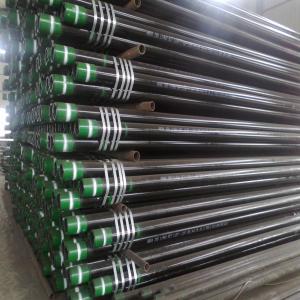CNBM low carbon steel fiber is used as a replacement for traditional reinforcement in various concrete applications such as: slab-on-ground, precast and shotcrete. With CNBM carbon steel fibers you can limit micro-cracking, expect excellent concrete strength and lower costs.
Excellent for major flooring projects, precast, shotcrete, highways, airports, and bridge decks. Straight, Continuously Deformed and End Deformed Design. For matchless purity, uniformity, performance and price, no one beats the CNBM product line!
Production:
A low carbon, cold rolled sheet steel is used to produce CNBM product for concrete applications. This steel has ultimate tensile strengths from 50 to 120 ksi (345 to 828 MPa) and has sufficient ductility actually to permit 180° bends without rupture. Various stainless steel grades are used for the reinforcement of refractory concretes. Information on these grades for high-temperature applications is available upon request. CNBM low carbon steel fiber has more reinforcing elements per pound of product than any of its competitors. There are nominally 21,000 3/4" and 16,000 1" straight fibers per pound, as well as 9,000 1" (254mm) deformed fibers per pound.
Catastrophic failure of concrete is virtually eliminated because the fibers continue supporting the load after cracking occurs. And while measured rates of improvement vary, CNBM reinforced concrete exhibits higher post-crack flexural strength, better crack resistance, improved fatigue strength, higher resistance to spalling, and higher first-crack strength. Figure 2 shows concrete flexural strengths when reinforced at various fiber proportions. Additionally, CNBM deformed fibers provide a positive mechanical bond within the concrete matrix to resist pull-out.
When CNBM fibers are added to mortar, Portland cement concrete or refractory concrete, the flexural strength of the composite is increased from 25% to 100% -depending on the proportion of fibers added and the mix design. CNBM technology actually transforms a brittle material into a more ductile one.
Sizes:
CNBM low carbon steel fibers are available in lengths from 0.50" (13mm) to 2.0" (50mm) and aspect ratios between 40 and 60. The fibers are manufactured either straight or deformed, and conform to ASTM A-820.
Mechanical Properties
| SFRC-0 | SFRC-1.0 | SFRC-1.5 | SFRC-2.0 |
Compressive strength Compressive strength(MPn) | 43.6 | 49.8 | 51.2 | 55.3 |
100% | 114.20% | 117.40% | 126.80% |
Chop adn tension strength(MPn) | 3.74 | 4.89 | 5.7 | 6.58 |
100% | 129.90% | 152.40% | 175.90% |
Bending strength with initial cracks(MPn) | 5.18 | 6.98 | 7.78 | 8.94 |
100% | 134.70% | 150.20% | 172.60% |
Max.anti-deformation(MPa) | 5.6 | 9.4 | 10.7 | 13.9 |
100% | 167.80% | 191.10% | 248.20% |
Toughness with initial cracks(Nmm) | 185.2 | 394.1 | 832.1 | 1161.1 |
100% | 212.80% | 449.30% | 627.00% |
Application in projects
Project Type | Length(mm) | Diameter(equilavent diameter mm) | Length/Diameter |
Ordinarily laid steel fiber concrete | 20-60 | 0.3-0.9 | 30-80 |
Steel fiber injected concrete | 20-35 | 0.3-0.8 | 30-80 |
Steel fiber concrete with earthquake resistant frame joints | 35-60 | 0.3-0.9 | 50-80 |
Steel fiber concrete railway sleeper | 30-35 | 0.3-0.6 | 50-70 |
Laminated steel fiber concrete complex road surface | 30-120 | 0.3-1.2 | 60-100 |
Recommendations for construction technology
1.Grade of cement should be not less than NO.425 and the ratio of water and mortar should not be more than 0.5.
2.The length of coarse material particles should not exceed 2/3 of that of steel fiber.
3.The mass of the steel fiber in steel fiber concrete should not be less than 0.5% and normally it is to be selected between 0.5%-2.0%.
4.Sea water and sea sand shall not be used for making blocking steel fiber concrete and then addition of chlorate is strictly prohibited.
5.Inaddition, other materials to be used together for steel fiber concreate shall be in accordance with the specifications of the existing standards in relation to reinforced concrete.
6.The viscosity of steel fiber concrete can be determined based on the requirements of normal engineering projects for common concrete. The value of its subside can be 200mm less than common concrete and its viscosity is the same as common concrete.
7.If there is no base material under the surface layer and the bottom layer for the shrinking seams as flat seams and if it is in accordance with the following conditions, then:
1.The thicknessof the surface layer and the bottom layer before the reduction is less than 130mm:2.The thickness of the reinforced base layer is more thant that of the bottom layer,then the thickness can time the reduction coefficient 0.75,but not more than 50mm.
Requirements for loading of materials
1.Steel fiber and other coarse materials are first put into a mixer and stirred for 30 seconds so that steel fiber shall be dispersed in the gravels to avoid agglomeration.
2.Sand and concrete is then put into a mixer for 30 second of dry stirring.
3.Water is then added into the rotating mixer with about 3 minutes of further stirring.
Packing of products:
The packing can be either in paper cartons in an orderly manner or paper bags in an optional way based on customers’ requirement. The first is with a small volume and it is not easy to agglomerate and so it can be used by adding it directly into other materials thus reducing the cost of equipment and transportation for customers.




